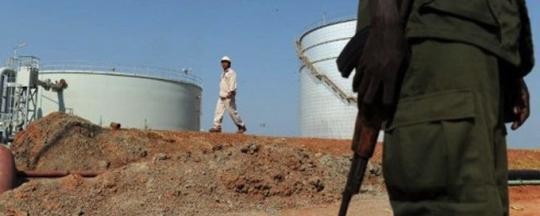South Sudan’s oil ministry has concluded that oil production is in quick decline, and future production will not reach even half of its peak 2010 levels even if all the oil fields began pumping again, according to ministry documents seen by Radio Tamazuj.
South Sudan has developed oil reserves in Upper Nile and Unity states, but only fields in Upper Nile are currently producing due to insecurity in Unity state. Even if the Unity fields started production this year, oil production would quickly peak at no more than 175 thousand barrels per day, less than half of its peak annual average, 360 thousand barrels per day in 2009.
Production would then drop rapidly to less than 100 thousand bpd by 2021 and under 50 thousand bpd by 2026, if no new reserves are discovered and developed, according to production charts included inside South Sudan’s annual crude oil marketing report produced by the Ministry of Petroleum and Mining, dated June 2015.
Despite declining production, the report notes that South Sudan still owes Sudan $2 billion of the total $3 billion it agreed to transfer to Sudan in exchange for passage of its oil through a pipeline to Port Sudan on the Red Sea.
“As of the end of May 2015 the remaining balance on the Transitional Financial Arrangement obligation to Sudan is USD 2.02 billion,” said the marketing report.
On top of transit, transport, and processing fees, South Sudan agreed to pay an extra $15 a barrel to Sudan under the TFA, up to a total of $3.028 billion. The oil transit agreement between Sudan and South Sudan expires December 2016.
In total, South Sudan agreed to pay Sudan between $24.10 – $26 a barrel, which deprived South Sudan of almost all the value of its oil when oil prices plummeted last year.
South Sudan relies almost exclusively on its oil exports for hard currency, which it needs to import any goods, leading South Sudan to start paying Sudan in oil transfers instead of cash, starting in March 2015.
CORRECTION: Oil production figures in this report as originally published were cited as “million barrels”. The correct measurement is thousand barrels per day (Mbbl/d). The text has been changed accordingly.




